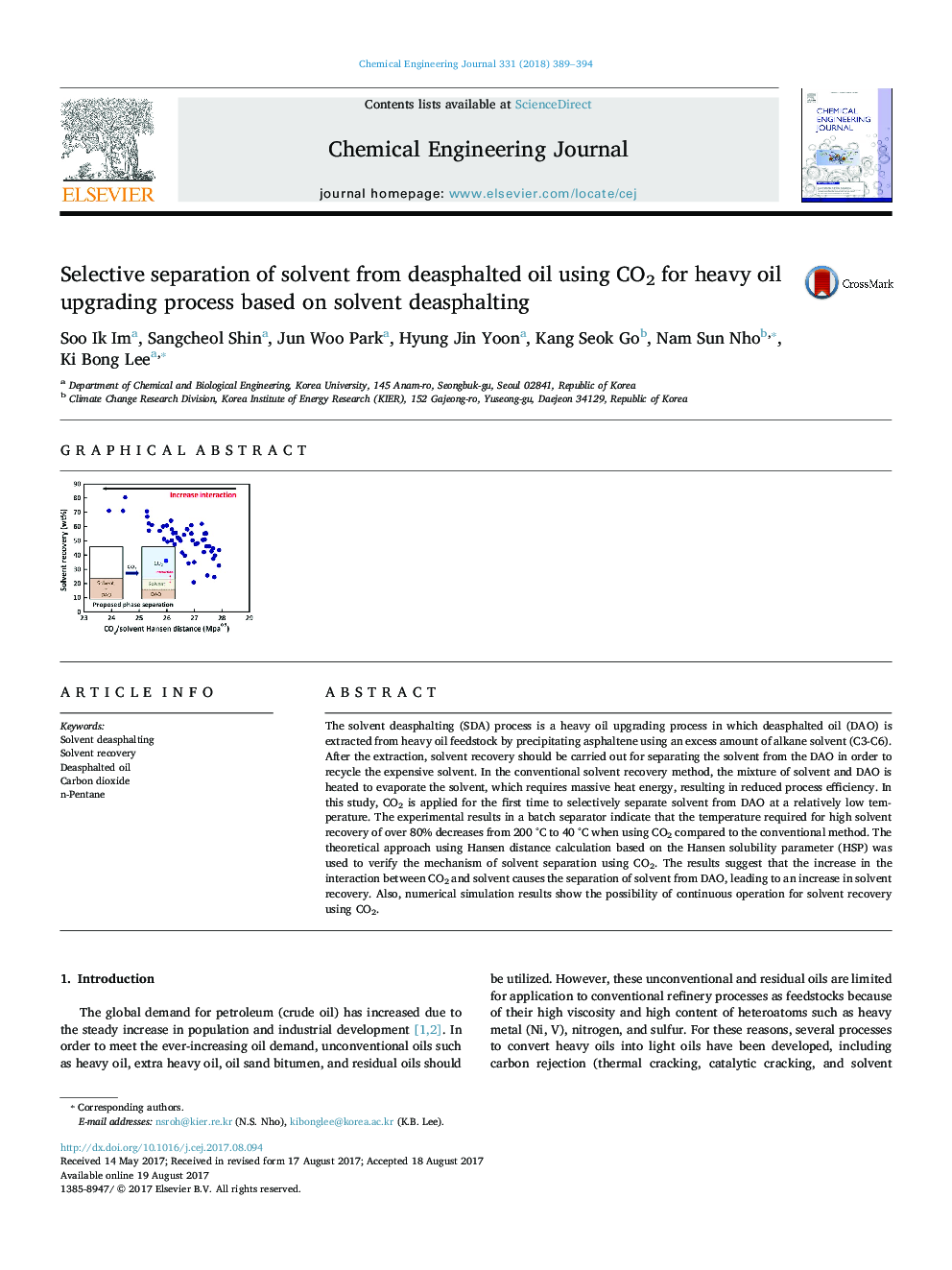| Article ID | Journal | Published Year | Pages | File Type |
|---|---|---|---|---|
| 4762831 | Chemical Engineering Journal | 2018 | 6 Pages |
â¢Solvent recovery using CO2 was newly developed for solvent deasphalting process.â¢High solvent recovery was achieved at relatively low temperature.â¢CO2 acts as an anti-solvent to separate the solvent from DAO.â¢Numerical simulation confirmed the possibility of a new solvent recovery operation.
The solvent deasphalting (SDA) process is a heavy oil upgrading process in which deasphalted oil (DAO) is extracted from heavy oil feedstock by precipitating asphaltene using an excess amount of alkane solvent (C3-C6). After the extraction, solvent recovery should be carried out for separating the solvent from the DAO in order to recycle the expensive solvent. In the conventional solvent recovery method, the mixture of solvent and DAO is heated to evaporate the solvent, which requires massive heat energy, resulting in reduced process efficiency. In this study, CO2 is applied for the first time to selectively separate solvent from DAO at a relatively low temperature. The experimental results in a batch separator indicate that the temperature required for high solvent recovery of over 80% decreases from 200 °C to 40 °C when using CO2 compared to the conventional method. The theoretical approach using Hansen distance calculation based on the Hansen solubility parameter (HSP) was used to verify the mechanism of solvent separation using CO2. The results suggest that the increase in the interaction between CO2 and solvent causes the separation of solvent from DAO, leading to an increase in solvent recovery. Also, numerical simulation results show the possibility of continuous operation for solvent recovery using CO2.
Graphical abstractDownload high-res image (53KB)Download full-size image
